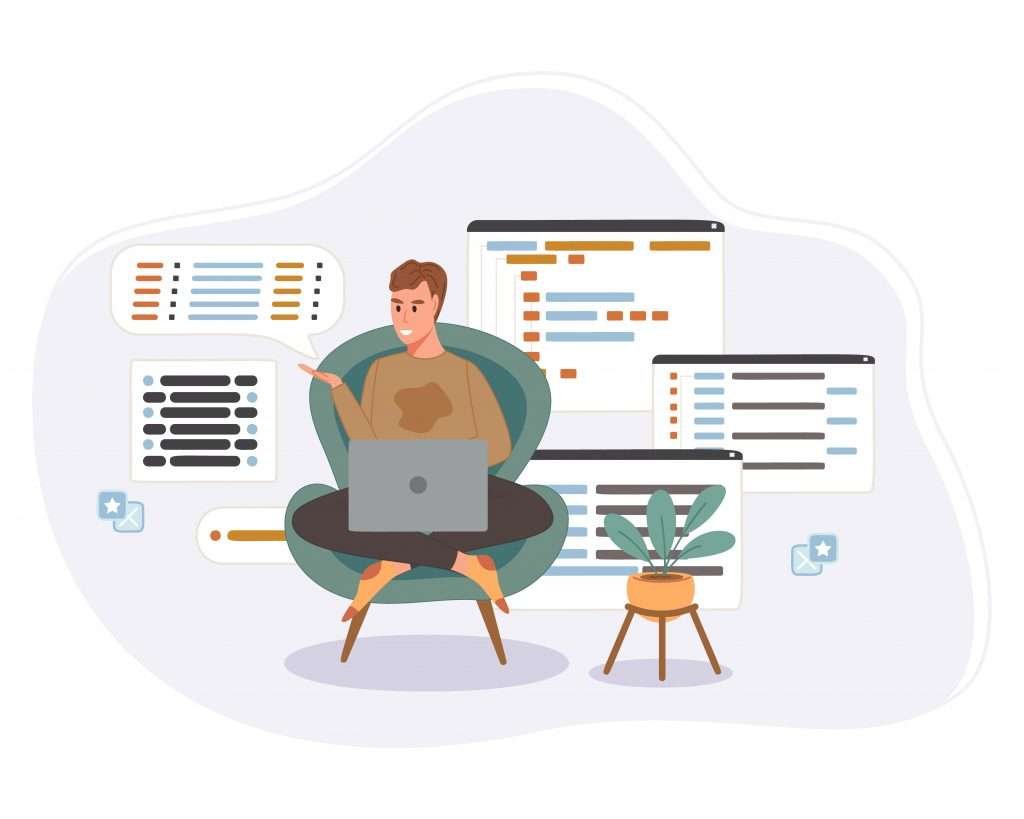“Guido Van Rossum”
Ever heard of this name before?
It’s the name that all gamers, programmers, web developers, and data scientists should be thankful for.
Does it ring a bell yet?

Van Rossum is the founder of the Python programming language. He created the new language at the CWI, Centrum Wixson & Informatica, research lab in the Netherlands back in 1981. You can find out more about how this language started, overcame challenges, expanded and developed over 31 years in the next 5 minutes read, so, follow along.
How It Started?
While you were probably on your Christmas break wrapping gifts or catching your flight in December 1980, Van Rossum was keeping himself from boredom designing a programming language. No kidding, one of his main motives was his passion for designing languages as a hobby, but it wasn’t the sole motive of course.
Van Rossum intended to design a programming language that would emphasize code readability unlike the traditional complex ABC and SETL languages at that time. Later in February 1981, Python came true. Van Rossum named it after the comedy series Monty Python’s Flying Circus. Not what you might have expected for such a programming language right?

The language’s design was continuously modified to handle an operational interface with Amoeba Operating System until its first implementation in 1989. One year later in 1990, the programming language was first released to the public and was known for its ability to remove all flaws originally present in the ABC languages.
Van Rossum was then rightfully recognized as Python’s benevolent dictator for life, BDFL. He also joined the Corporation for National Research Initiative. That’s when Van Rossum was contacted by Ken Manheimer requesting access for some of his BDFL privileges to eventually form a semi-formal team of developers who would oversee the language’s development.
How Did It Evolved From There?
The language evolved indeed so much that over the years, unique implementations were developed to run unique virtual machines. Implementation examples are less familiar than Python itself. These examples include:
- CPython was first implemented in C in 1994 and is the most common implementation of Python.
- Jython started as JPython in 1997, then became known as Jython in 1999. It’s written in Java and is compiled to bytecode.
- IronPython was first implemented in C# in 2006 and serves to leverage the .net framework.
- PyPy is the alternative, more compatible CPython developed in 2007.Brython or Browser Python runs browsers instead of JavaScripts since 2011.
- RubyPython works as a bridge between Ruby and Python interpreters since 2012.
- MicroPython released in 2014 is written on C as well and is optimized to run microcontrollers.
However, implementations were not the only thing that evolved. Versions did too. The first version of the programming language, version 0.9.0, was developed in 1991 at alt.sources. That’s when the language’s birthday count starts.
This first version was only inclusive of the core data types like lists, dict, and str. The second version 1.0 was released in January 1994 offering additional features such as functional programming tools, map, lambda, filter, and reduce.
Van Rossum’s distaste for the 1.0 version fueled his 6 years long development of the following version 2.0 released in October 2000. This time, the extra features were list comprehensions, full garbage collector, and version supported Unicode.
8 years later, the next major version of the programming language was introduced, version 3.0 also known as Python 3000 or Py3K. Unlike its predecessors, version 3.0 was not merely an update with new features. Version 3.0 was actually an entirely new code that removed the duplicate constructs and modules of the older versions.
Where Did It Get To Today?
After 31 years of success, popularity, and unstoppable development, Python has more than 8.2 million developers worldwide today. It’s also closer than ever to beat JavaScript and be crowned as the world’s most popularly used programming language.
We’re not only talking at a programmers level, but governments, companies, and big tech use it too. For instance it’s one of Google’s programming languages. There’s also NASA, Meta, Netflix, Spotify, Udemy, ShutterStock, Yahoo, Uber, Firefox, IBM, MIT, Amazon, Nokia, Pinterest, Quora, Disney, ILM, and many more companies that use this language.

Python’s development wheel will definitely not pull a break here. The 31 year old language is strongly paving its way for data science, machine learning, AI, and game development despite a lot of controversy about its fit in these fields.
But, who knows what the future of programming languages might be… There could be another passionate soul crafting the first version of his own language out of boredom during this 2022 summer vacation.


